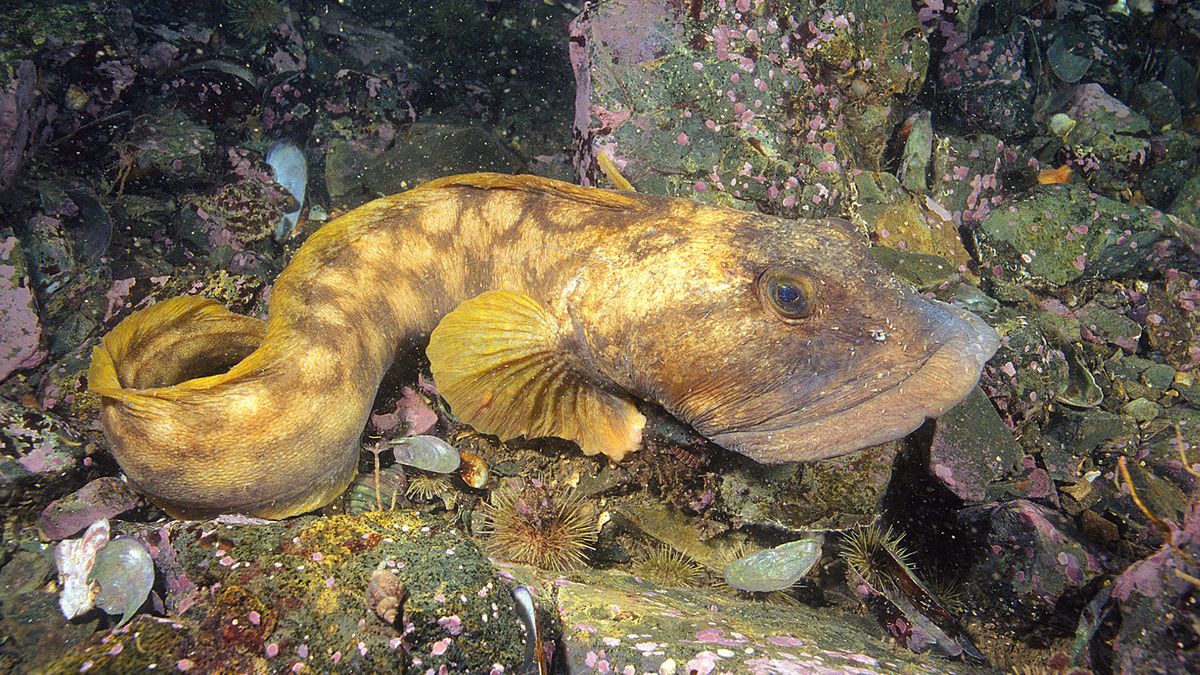
Name: Ocean pout (Zoarces americanus)
Where it lives: Western Atlantic Ocean, ranging from Labrador in Canada to North Carolina, in waters from near the shore to depths of almost 1,300 feet (400 meters).
What it eats: Crustaceans such as crabs and amphipods, echinoderms such as brittle stars, sand dollars and sea urchins, as well as polychaete worms and sea squirts. It's currently not fully known whether they primarily suction feed from the seafloor or ambush their prey.
Why it's awesome: "Ocean pout" might sound like a new TikTok cosmetic trend — a successor to mermaidcore perhaps — but the ocean pout is actually far closer to being one of Ursula's eels. With blotchy skin ranging from rusty brown to grayish green and an elongated body that's up to 4 feet (1.2 m) long, it is perfectly suited to its bottom-dwelling lifestyle. Trawling the seafloor in search of invertebrate prey, it makes short work of its victims using a set of peg-like teeth.
The species lays its eggs in crevices or even in human trash — in one case, a discarded rubber boot. The female guards the eggs for up to three months, after which the larval fish must fend for themselves. The young are prey to a wide array of species, from squid to skates. Adults may be eaten by sharks, cod and sea bass.
Because it inhabits deep, cold waters, the species has evolved a protein in its blood that serves as antifreeze, protecting its body from damage by ice crystals even in the most frigid waters.
This protein has proven surprisingly useful to humans — despite the ocean pout being protected from commercial fishing.
Geneticists have attached the promoter for the gene coding for the antifreeze protein to a growth hormone gene from Chinook salmon (Oncorhynchus tshawytscha) to create genetically modified Atlantic salmon (Salmo salar) that grow more quickly than their non-GM counterparts.
The gene for the antifreeze protein promotes the salmons' growth hormone gene, resulting in salmon that mature at twice as fast and require less food. Activists have objected to the sale of genetically modified animal products, but the Food and Drug Administration (FDA) approved the fish for sale in 2015. The first genetically modified salmon were sold in 2021.
That same antifreeze gene was also engineered into yeast, and the resulting protein is used to prevent ice crystallizing in low-fat ice cream. It has been approved for consumption in many countries, including the United States.
"fish" - Google News
December 02, 2023 at 08:00PM
https://ift.tt/xO2EFBl
Ocean pout: The fish with antifreeze blood - Livescience.com
"fish" - Google News
https://ift.tt/r5O9dI4
https://ift.tt/CZIyqka
Bagikan Berita Ini















0 Response to "Ocean pout: The fish with antifreeze blood - Livescience.com"
Post a Comment